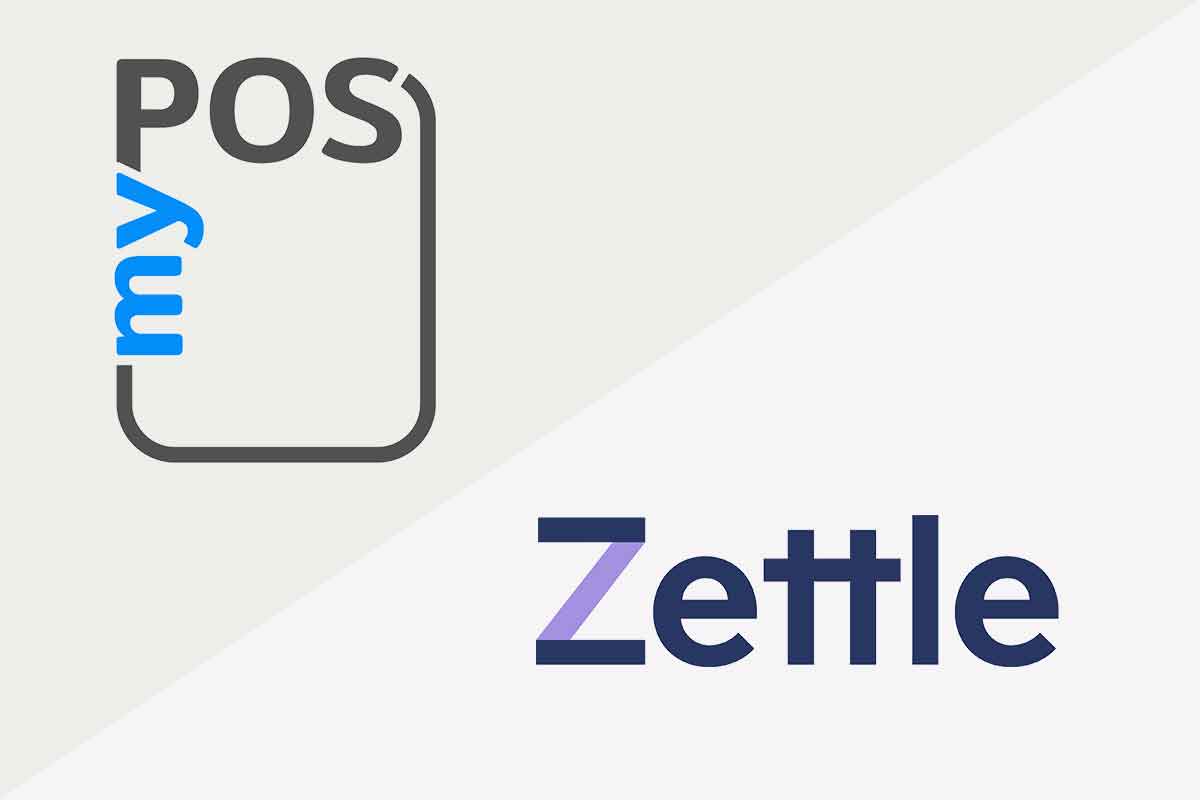Understanding the unique attributes and shortcomings of myPOS vs Zettle, two of the leading payment processing providers in the market, can be a bit of a jigsaw puzzle for businesses. This in-depth comparison aims to equip UK businesses with essential insights, enabling you to make an informed decision.
myPOS vs Zettle
| Features/Fees | myPOS | Zettle |
|---|---|---|
| Payment Hardware | Variety of devices | Single reader |
| Supports Chip & PIN, Contactless, Mobile Wallets | Yes | Yes |
| Transaction Fee (In-person) | Varies (1.75% – 2.85%) | 1.75% |
| Transaction Fee (Online/Mobile) | Varies (1.75% – 2.85%) | Not applicable |
| Monthly Fee | No | No |
| Payout Time | Instant | 1-2 business days |
| Customer Support | 24/7 via phone, email, live chat | Limited hours via phone, email, community forum |
| Multi-lingual Support | Yes | No |
| Free POS App | Yes | Yes |
| Supports Multiple Currencies | Yes | Yes |
| Supports Digital Wallets (Apple Pay, Google Pay) | Yes | Yes |
| Includes IBAN Account | Yes | No |
Payment processing – a vital aspect of business operations
Before we dive into comparing myPOS and Zettle, it’s worth touching on the importance of payment processing.
Featured pro tools
With the increasing digitisation of businesses and the growing preference for contactless payments, businesses now require a reliable and secure means of accepting electronic payments.
That’s where payment processors come in: they facilitate transactions by transmitting information between banks.
A peek into myPOS and Zettle
Both myPOS and Zettle (formerly iZettle) have become significant players in the payment processing industry, offering solutions that cater to a wide variety of businesses, from small startups to large enterprises.
myPOS – an overview
myPOS, a London-based company, provides a payment platform that enables businesses to accept card payments in various ways, whether that’s in-person via POS terminals, online through a payment gateway, or through a mobile app.
One of myPOS’s key selling points is the inclusion of a free European IBAN account, which businesses can use for bank transfers, direct debits, and more.
Zettle – an overview
Zettle, on the other hand, is a Swedish company now owned by PayPal. It offers an easy-to-use card reader and a free point-of-sale app.
Zettle’s primary focus is on facilitating card and contactless payments for small to medium-sized businesses, making it a favourite among cafes, pop-up shops, and mobile businesses.
Comparing the payment hardware
myPOS’s range of options
myPOS offers an array of payment hardware, from countertop devices for brick-and-mortar stores to portable card machines for mobile businesses.
Each device supports Chip & PIN, contactless, and mobile payments. An interesting feature is that myPOS’s devices also accept payments via digital wallets like Apple Pay and Google Pay.
Zettle’s minimalist approach
Zettle takes a different tack, offering just one device: the Zettle Reader.
It’s a sleek, portable device that supports Chip & PIN, contactless, and mobile wallet payments. Though it offers fewer options, Zettle’s hardware is known for its simplicity, reliability, and user-friendly interface.
Delving into fees and pricing
myPOS’s pricing structure
myPOS operates with a pay-as-you-go pricing structure. It doesn’t charge a monthly fee for its services, but it takes a fixed percentage per transaction, which varies based on the type of payment (e.g., in-person, online, or mobile app).
While this is advantageous for businesses with lower sales volumes, those with higher transaction volumes may find the costs add up.
Zettle’s straightforward pricing
Zettle also doesn’t charge a monthly fee. However, its transaction fees are a flat rate of 1.75% for all card payments, regardless of the payment method or card type.
This can be particularly beneficial for businesses that have a high volume of card transactions.
Transaction speed and payouts
myPOS’s instant payouts
One standout feature of myPOS is its instant payouts. Funds from card sales are immediately available in the merchant’s myPOS account.
This is a significant advantage for businesses needing quick access to their funds.
Zettle’s standard payout schedule
Zettle follows a standard payout schedule. The funds from card sales are deposited into the merchant’s bank account within 1-2 business days. While this might not be an issue for many businesses, those that require faster access to funds may find myPOS’s instant payout feature more appealing.
Weighing up customer support
myPOS’s multi-lingual support
myPOS offers customer support in multiple European languages, which is helpful for businesses that operate in different regions. It provides 24/7 support via phone, email, and live chat.
Zettle’s community-driven support
Zettle also offers customer support through phone and email, though not around the clock. A unique aspect of Zettle’s support system is its community forum, which allows users to share experiences and solutions.
In conclusion – myPOS vs Zettle
Both myPOS and Zettle offer compelling payment processing solutions, and the choice between the two largely depends on your business’s specific needs.
If you require a variety of hardware options, instant payouts, and multi-lingual support, myPOS might be the better choice.
However, if you value simplicity, predictable flat-rate pricing, and a community-driven support system, Zettle could be the way to go.
In any case, understanding the offerings and limitations of both myPOS vs Zettle is a step in the right direction towards optimising your business’s payment processing system.
After all, the end goal is to provide a seamless payment experience for your customers, contributing to your business’s success.
FAQ
myPOS is versatile and can cater to a wide range of businesses, from brick-and-mortar shops to online businesses and mobile services. Its ability to provide instant payouts might appeal particularly to businesses needing quick access to their funds.
While Zettle is widely used by small to medium-sized businesses due to its simplicity, it can also be a suitable choice for larger businesses that value straightforward flat-rate pricing and a user-friendly interface.
Yes, myPOS supports digital wallet payments, including Google Pay and Apple Pay.
Yes, Zettle accepts contactless payments, including mobile wallets like Apple Pay and Google Pay.
Yes, myPOS offers instant payouts, meaning funds from card sales are immediately available in the merchant’s myPOS account.
Zettle typically transfers funds to the merchant’s bank account within 1-2 business days.
No, neither myPOS nor Zettle charge monthly fees.
myPOS offers customer support in multiple European languages.
No, Zettle does not provide round-the-clock support. However, it does offer support via phone and email during specified hours, and also has a community forum for additional assistance.
Yes, both myPOS and Zettle offer free point-of-sale apps.
The transaction fee for myPOS varies between 1.75% and 2.85%, depending on the type of payment.
Zettle charges a flat transaction fee of 1.75% for all card payments.
Yes, both myPOS and Zettle support transactions in multiple currencies.
No, Zettle’s card reader is designed to work specifically with the Zettle system, and vice versa for myPOS.
Yes, myPOS provides a free European IBAN account that businesses can use for bank transfers, direct debits, and more.
No, Zettle does not offer an IBAN account as part of its services.
Both myPOS and Zettle have been praised for their easy set-up processes. They provide clear instructions and intuitive interfaces that make the initial set-up relatively simple.
Yes, both myPOS and Zettle offer portable card readers suitable for businesses on the move.
Both myPOS and Zettle can process a wide range of debit and credit cards, including Visa, MasterCard, and American Express.
Yes, both myPOS and Zettle follow stringent security protocols to ensure that transactions are processed safely. They are compliant with the Payment Card Industry Data Security Standard (PCI-DSS).

